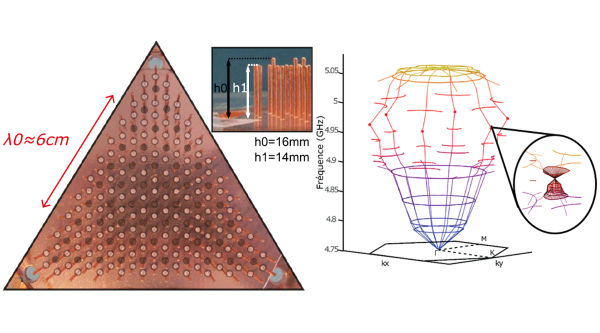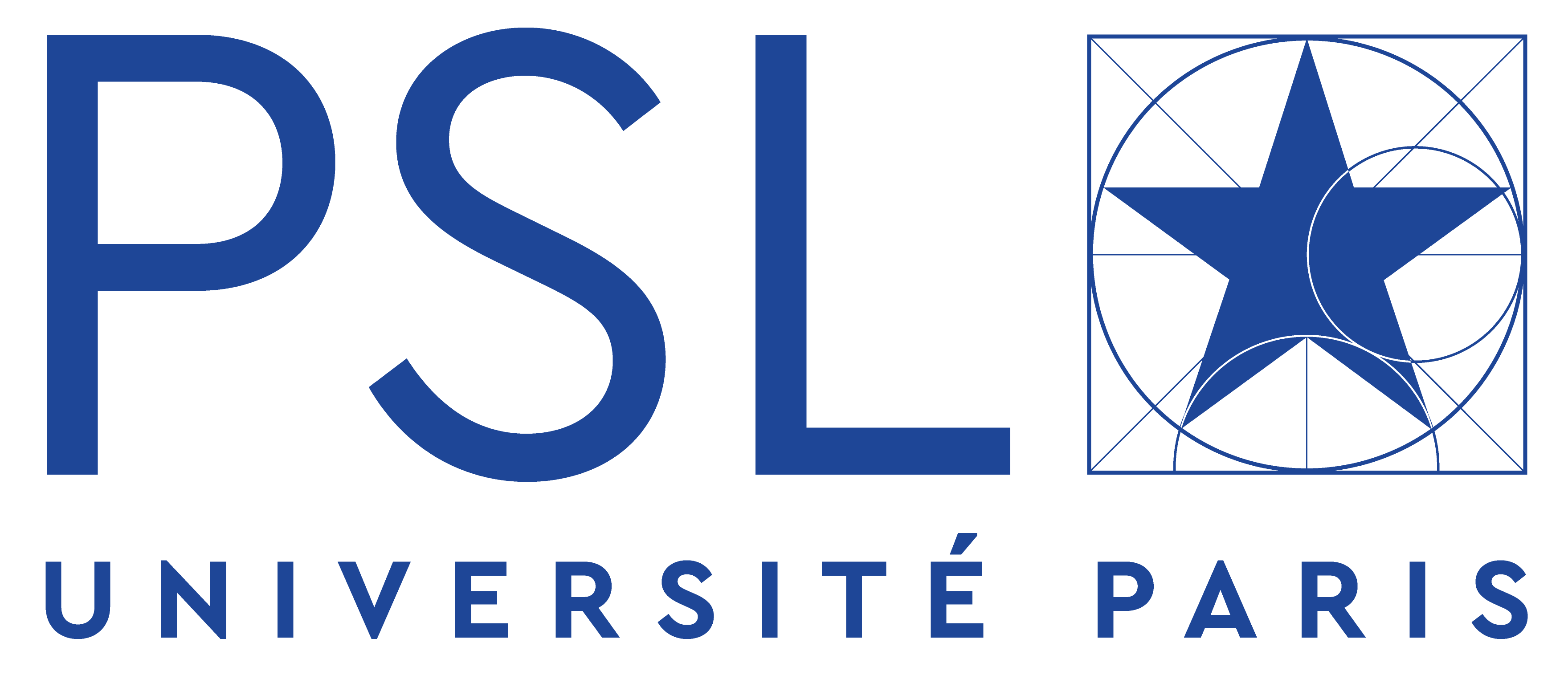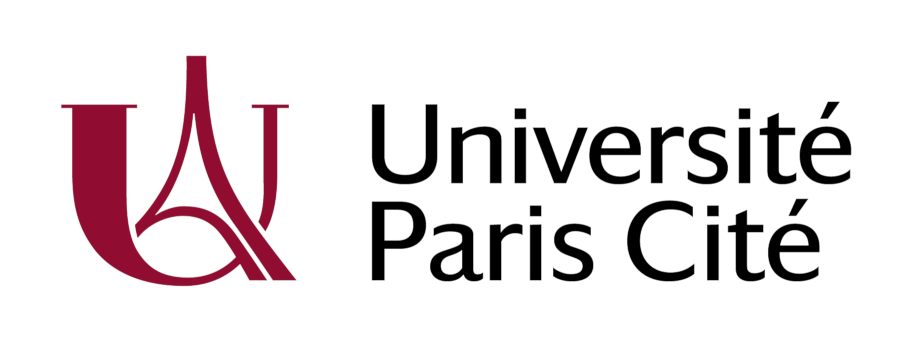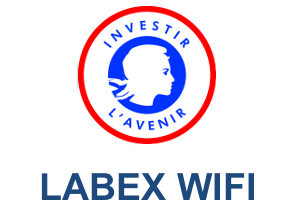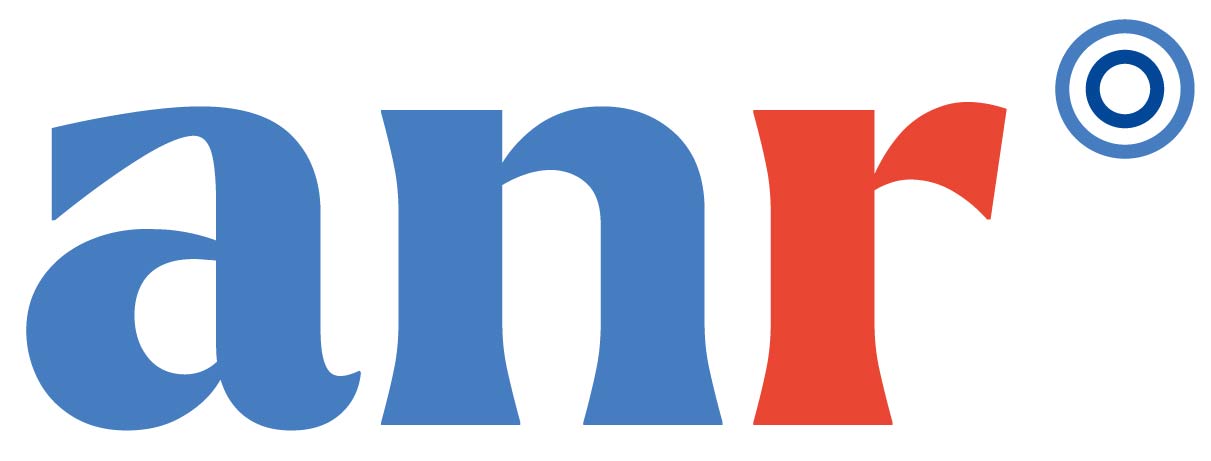Reconfigurable and active time-reversal metasurface turns walls into sound routers
Dorlot, F., C. Bourdeloux, M. Fink, and F. Lemoult
Communications Physics 8, no. 1 (2025)
Résumé: Sound control in noisy or reverberant spaces is important for applications ranging from communication to immersive audio. However, existing methods often struggle to deliver sound selectively to specific listeners without interference. Here we show that an active acoustic metasurface, composed of programmable elements that both sense and re-emit sound, enables precise targeting of audio in complex environments. Each element processes signals in real time using convolution filtering, allowing us to exploit reciprocity and time-reversal symmetry in wave propagation. Experiments with audible sound in reverberant rooms demonstrate that this approach creates clear, individualized sound channels while suppressing unwanted noise. This research opens new possibilities for adaptive sound delivery in crowded or dynamic settings, with potential applications in conferencing, entertainment, and assistive listening technologies.
|


|
Impulsive shock wave propagation in granular packings under gravity
Van Den Wildenberg, S., X. Nguyen, A. Tourin, and X. Jia
Mechanics Research Communications 150 (2025)

Résumé: We experimentally investigate the impulsive shock propagation caused by an impact into vertically oriented 3D granular packings under gravity. We observe a crossover of wave propagation, from sound excitation at low impact to shock front formation at high impact. One of our findings is a nonlinear acoustic regime prior to the shock regime in which the wave speed decreases with the particle-velocity amplitude due to frictional sliding and rearrangement. Also, we show that the impulsive shock waves at high impact exhibit a characteristic spatial width of approximately 10 particle diameters, regardless of shock amplitude. This finding is similar to that observed in 1D granular chains and appears to be independent of the contact microstructure, whether involving dry or weakly wet glass beads, or sand particles. The final and main finding is that we observe the coexistence of the shock front and the sound waves (ballistic propagation and multiple scattering), separated by a distinct time interval. This delay increases with impact amplitude, due to the increase shock speed on one hand and the decrease of the elastic modulus (and sound speed) in mechanically weakened granular packings by high impact on the other hand. Introducing a small amount of wetting oil into glass bead packings leads to significant viscous dissipation of scattered acoustic waves, while only slightly affecting the shock waves evidenced by a modest increase in shock front width. Our study reveals that shock-induced sound waves and scattering play an important role in shock wave attenuation within a mechanically weakened granular packing by impact. Investigating impact-driven wave propagation through such a medium also offers one way of interrogating a 3D FPUT-like system where nonlinear and linear forces between grains are involved.
|

|
Detection and characterization of targets in complex media using fingerprint matrices
Le Ber, A., A. Goïcoechea, L. M. Rachbauer, W. Lambert, X. Jia, M. Fink, A. Tourin, S. Rotter, and A. Aubry
Nature Physics 21, no. 10, 1609-1615 (2025)

Résumé: When waves propagate through a complex medium, they undergo several scattering events. This phenomenon is detrimental to imaging, as it causes full blurring of the image. Here we describe a method for detecting, localizing and characterizing any scattering target embedded in a complex medium. We introduce a fingerprint operator that contains the specific signature of the target with respect to its environment. When applied to the recorded reflection matrix, it provides a likelihood index of the target state. This state can be the position of the target for localization purposes, its shape for characterization or any other parameter that influences its response. We demonstrate the versatility of our method by performing proof-of-concept ultrasound experiments on elastic spheres buried inside a strongly scattering granular suspension and on lesion markers, which are commonly used to monitor breast tumours, embedded in a foam mimicking soft tissue. Furthermore, we show how the fingerprint operator can be leveraged to characterize the complex medium itself by mapping the fibre architecture within muscle tissue. Our method is broadly applicable to different types of waves beyond ultrasound for which multi-element technology allows a reflection matrix to be measured.
|


|
Non-linear coupling in two non-linear delayed acoustic resonators
Reda, J., M. Fink, and F. Lemoult
Journal of the Acoustical Society of America 158, no. 3, 2130-2137 (2025)
Résumé: Building on our previous work on a Hopf resonator that mimics the cochlear amplifier from Reda, Fink, and Lemoult [(2023). Europhys. Lett. 144(3), 37001], we now turn to the fact that the inner ear comprises thousands of such resonators, which interact through coupling mechanisms. To gain insight into these interactions, we investigate the coupling of two acoustic resonators with slightly detuned resonance frequencies, interacting through time-delayed feedback loops. By modulating the gain of the loop and the coupling strength, we demonstrate the emergence of frequency synchronization at low amplitudes and bifurcations leading to desynchronization at higher amplitudes. This tunable non-linear interaction offers insights into resonance phenomena in coupled systems, with potential implications for auditory modeling and complex acoustic systems.
|


|
